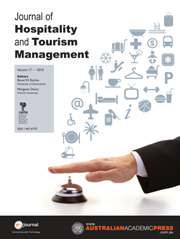Article contents
Reconceptualising the Commercial Meal Experience in the Hospitality Industry
Published online by Cambridge University Press: 17 July 2012
Abstract
This article critically reappraises a key concept in hospitality management (and specifically food and beverage management) — that of the meal experience. Focusing primarily on the commercial sense and applications of the concept, while recognising the many other contexts that provide a basis for much wider study of the phenomenon, the discussion questions the status of the meal experience as part of the ‘received wisdom’ of hospitality management on the grounds that empirical support for the concept, as represented in the published research literature, is limited both in quantity and evidential persuasiveness.
Keywords
- Type
- Articles
- Information
- Copyright
- Copyright © The Authors 2012
References
- 4
- Cited by




